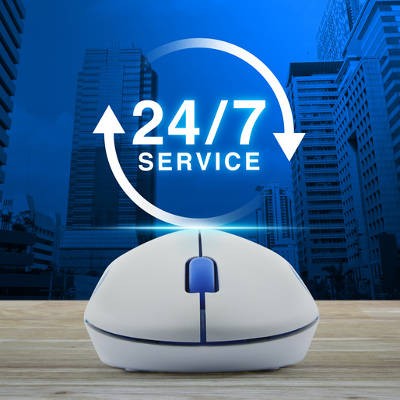Ferrum Technology Services Blog
Most businesses that have chosen to use managed IT services have found that their technology works better than it did before partnering with their provider. It’s not just a group of people sitting around fixing computers, however, there are some real strategies in place to allow for this to happen. Today we’ll give you a brief overview of the services we offer.
Depending on your business’ setup, you might have an in-house IT department that manages any of your technological assets, or you might have an outsourced vendor that you prefer to work with. Regardless, you know that as a business owner, you don’t have time to worry about managing IT--especially if you’re a small organization that has a limited budget and a limited workforce to do the work.
The cloud is a great asset for any business, whether you’re a major enterprise or a small family-owned operation. However, there are different types of hosted solutions, and they all offer various benefits and hindrances for your business. What’s the best type of cloud for your organization, and how can you protect the security and integrity of the data stored in it?
The businesses of today rely on technology in order to function, which means that their technology needs to be in top shape. However, this requires a sizable time commitment, something that most businesses will have trouble seeing through. Help comes for these businesses in the form of remote monitoring and management.
The same business technology that worked wonders over twenty years ago is much different from the current state of office technology. Businesses could get away without a complex network infrastructure, but that’s sadly no longer the case. With multiple servers and workstations to manage, the typical small business network has more maintenance on its hands than ever before. What’s the best way to approach this maintenance?
When you experience troubles with your technology, you don’t have time to just sit around and wait for the problem to resolve itself. You need someone by your side to assist with the problem. Yet, many small businesses don’t have the luxury of an in-house IT department that can help its employees resolve problems quickly and efficiently. How can you avoid this common issue and keep downtime to a minimum in the process?
With computing and networking hardware shown to be unreliable over time, businesses need to have a strategy in place to fix or replace their hardware. This is especially the case when it comes to servers. Replacing a server is expensive, but when it fails, you aren’t left with a lot of choices. What’s your plan for dealing with hardware failure? Here are three options.
Contrary to popular belief, small businesses are at just as much risk of experiencing technological problems as large enterprises. Naturally, the more technology that is implemented in an office, the more likely you are to experience hardware failure or compatibility issues. Data distribution can get more difficult, and accessibility can become a major pain point. How can you optimize the efficiency of your IT resources without exposing your business to risks?
If you’re one of the small businesses that has the resources to devote to an internal IT department, then you know how difficult it is playing at help desk with the rest of your employees. Their role is crucial to helping those who are less tech-savvy, but there’s always the chance that even your IT department will be stumped. That’s not to mention the fact that your help desk could be filled with potentially-avoidable requests.
 Doing business today is much different than it was in medieval times. Thanks to the Renaissance, modern businesses now have a technology-based economy, instead of one that's magic-based--this has been an especially difficult transition for wizards. Although, one medieval business practice that's still going strong is the idea behind guilds.
Doing business today is much different than it was in medieval times. Thanks to the Renaissance, modern businesses now have a technology-based economy, instead of one that's magic-based--this has been an especially difficult transition for wizards. Although, one medieval business practice that's still going strong is the idea behind guilds.
 Technology grows more mobile with each passing day, but the need for technical support remains the same. But, sometimes you just can't get on-site support while you are traveling. What, then, would you do if you had an urgent need for IT support, especially if your provider doesn't offer remote support?
Technology grows more mobile with each passing day, but the need for technical support remains the same. But, sometimes you just can't get on-site support while you are traveling. What, then, would you do if you had an urgent need for IT support, especially if your provider doesn't offer remote support?











